Ammonium ions improve the survival of glutamine-starved hybridoma cells
- PMID: 27087916
- PMCID: PMC4832542
- DOI: 10.1186/s13578-016-0092-8
Ammonium ions improve the survival of glutamine-starved hybridoma cells
Abstract
Background: As a consequence of a reprogrammed metabolism, cancer cells are dependent on the amino acid l-glutamine for their survival, a phenomenon that currently forms the basis for the generation of new, cancer-specific therapies. In this paper, we report on the role which ammonium ions, a product of glutaminolysis, play on the survival of l-glutamine-deprived Sp2/0-Ag14 mouse hybridoma cells.
Results: The supplementation of l-glutamine-starved Sp2/0-Ag14 cell cultures with either ammonium acetate or ammonium chloride resulted in a significant increase in viability. This effect did not depend on the ability of cells to synthesize l-glutamine, and was not affected by the co-supplementation with α-ketoglutarate. When we examined the effect of ammonium acetate and ammonium chloride on the induction of apoptosis by glutamine deprivation, we found that ammonium salts did not prevent caspase-3 activation or cytochrome c leakage, indicating that they did not act by modulating core apoptotic processes. However, both ammonium acetate and ammonium chloride caused a significant reduction in the number of l-glutamine-starved cells exhibiting apoptotic nuclear fragmentation and/or condensation.
Conclusion: All together, our results show that ammonium ions promote the survival of l-glutamine-deprived Sp2/0-Ag14 cells and modulate late-apoptotic events. These findings highlight the complexity of the modulation of cell survival by l-glutamine, and suggest that targeting survival-signaling pathways modulated by ammonium ions should be examined as a potential anti-cancer strategy.
Keywords: Ammonium; Apoptosis; Caspase; Glutamine; Glutaminolysis; Hybridoma.
Figures
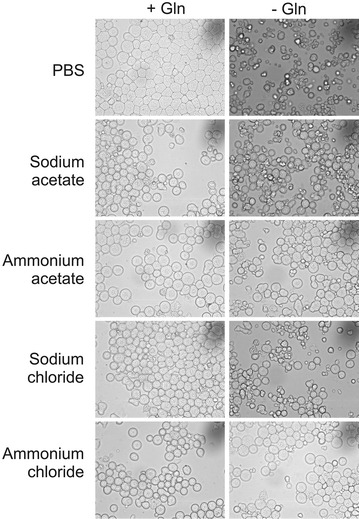

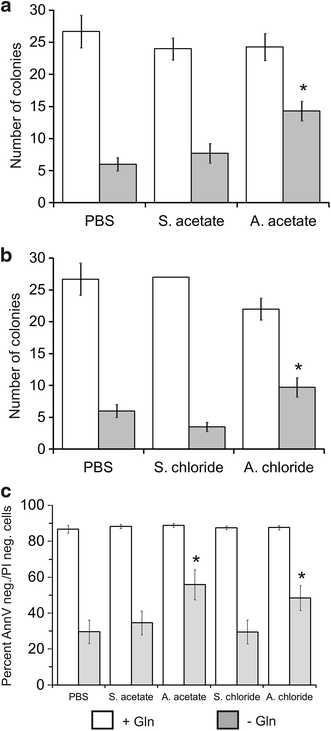
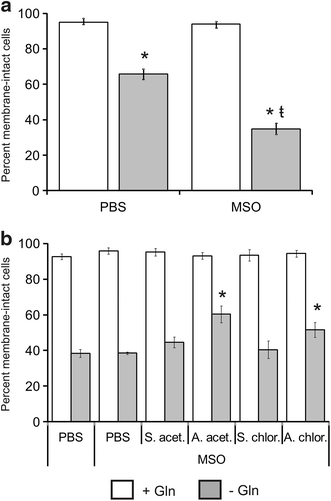
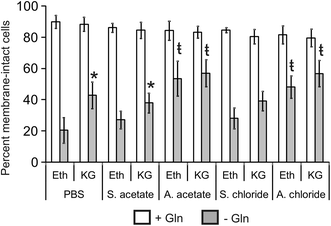
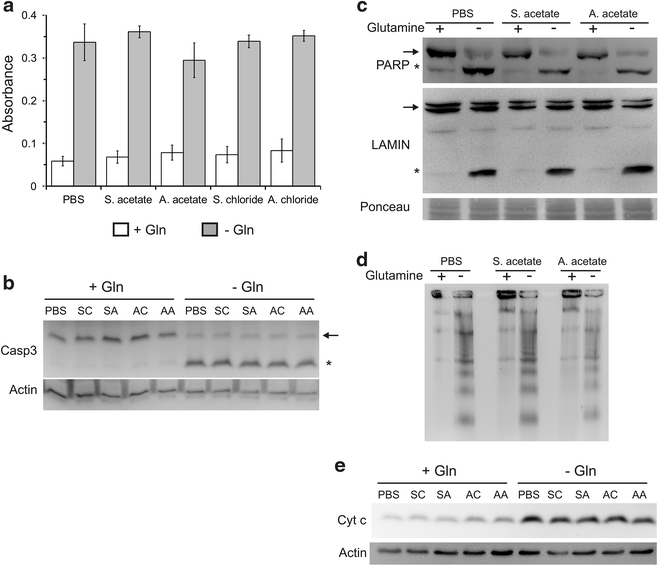
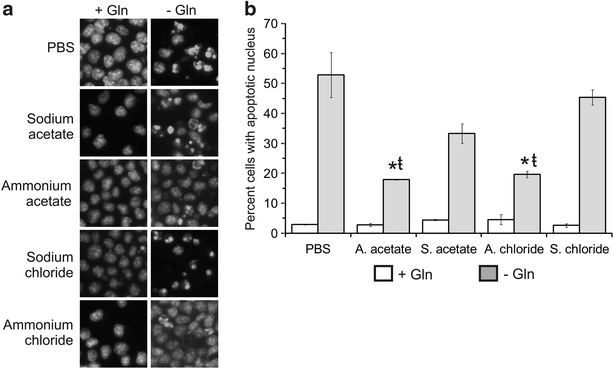
References
-
- DeBerardinis RJ, Mancuso A, Daikhin E, Nissim I, Yudkoff M, Wehrli S, Thompson CB. Beyond aerobic glycolysis: transformed cells can engage in glutamine metabolism that exceeds the requirement for protein and nucleotide synthesis. Proc Natl Acad Sci. 2007;104(49):19345–19350. doi: 10.1073/pnas.0709747104. - DOI - PMC - PubMed
LinkOut - more resources
Full Text Sources
Other Literature Sources
Research Materials

